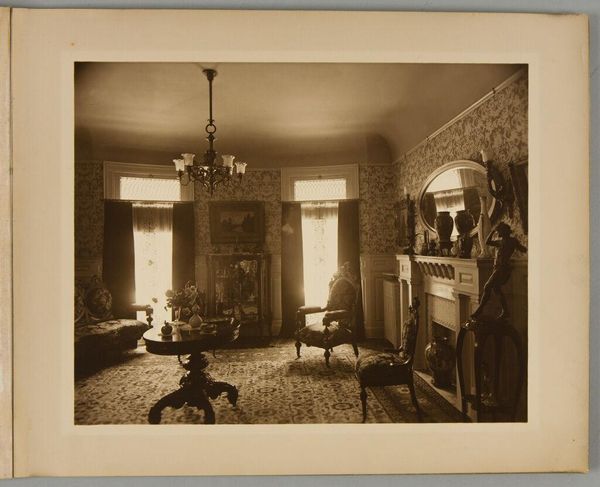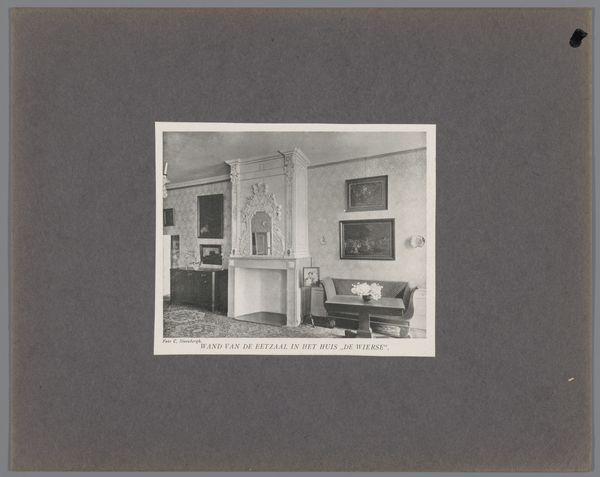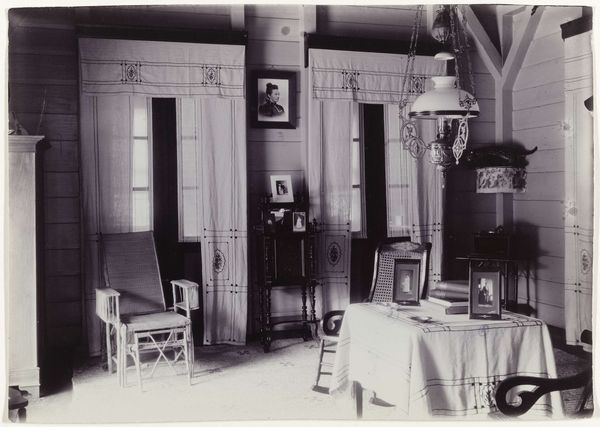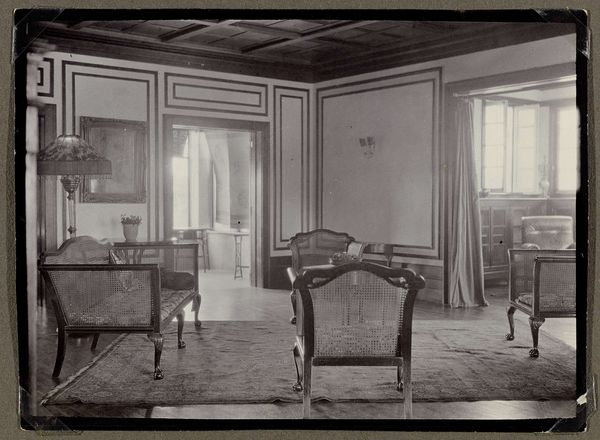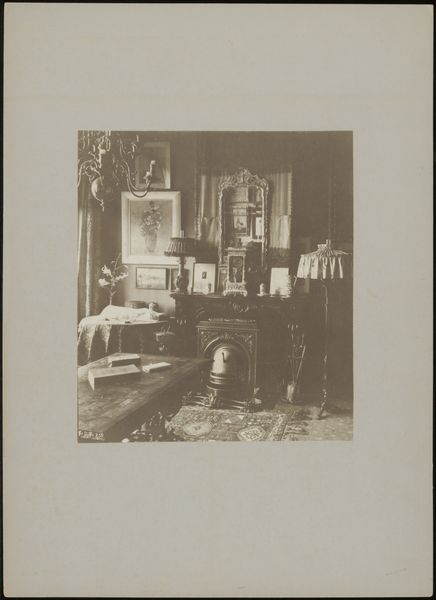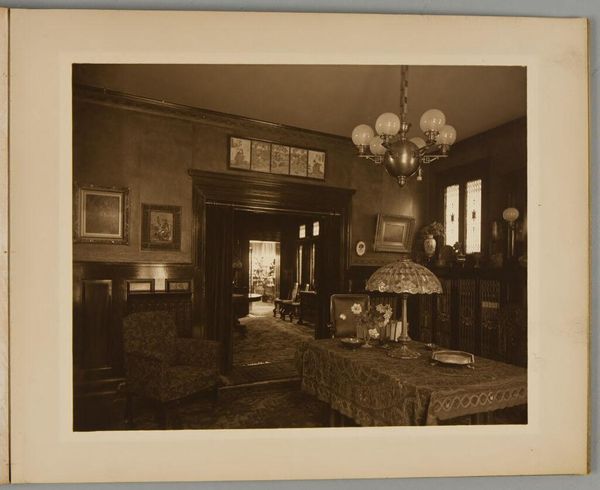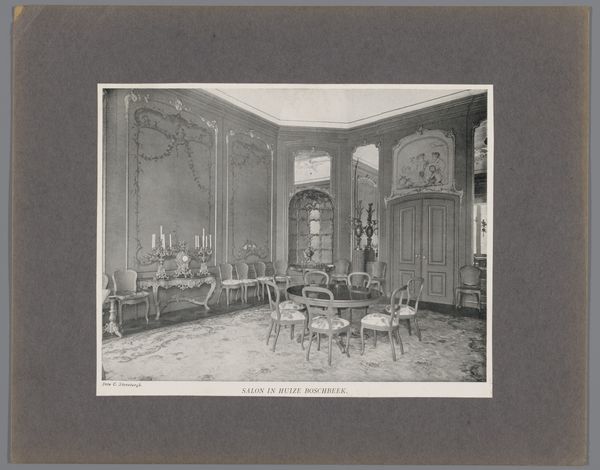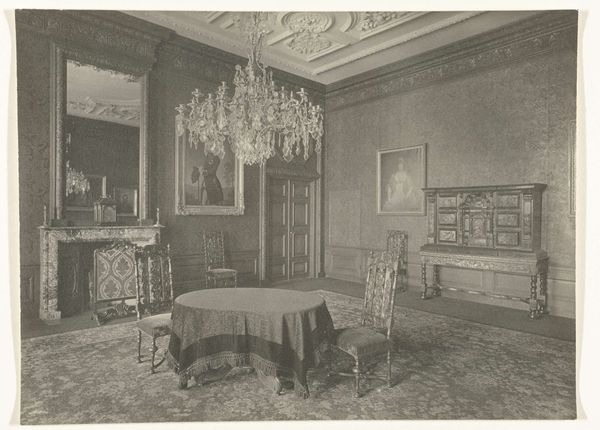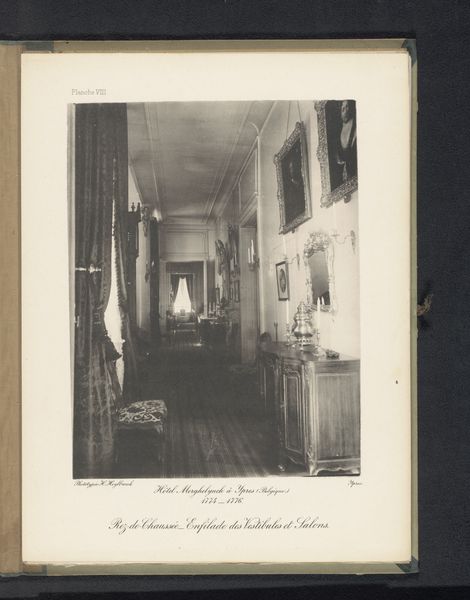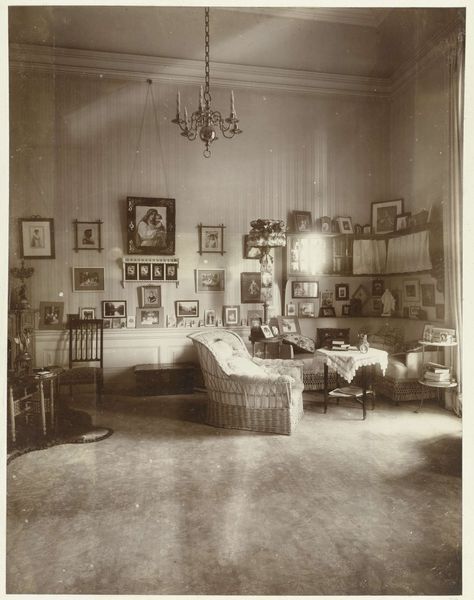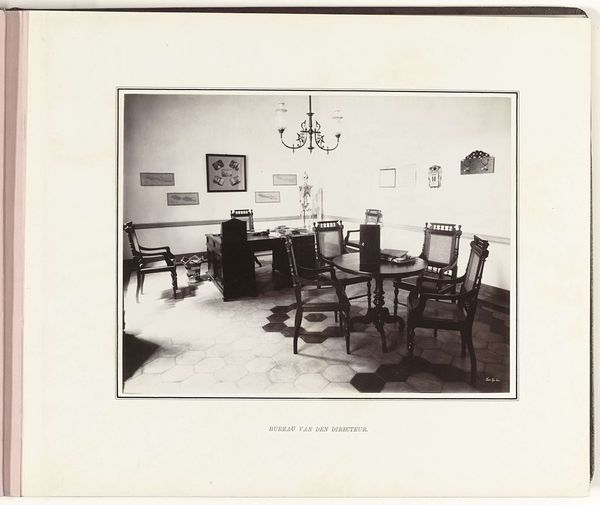
Kamer in geboortehuis van Napoleon Bonaparte, Ajaccio c. 1886 - 1896
0:00
0:00
henrypauwvanwieldrecht
Rijksmuseum
photography, gelatin-silver-print
#
portrait
#
archive photography
#
photography
#
historical photography
#
gelatin-silver-print
Dimensions: height 170 mm, width 230 mm, height 322 mm, width 498 mm
Copyright: Rijks Museum: Open Domain
This is an undated photograph by Henry Pauw van Wieldrecht showing the room in Ajaccio, Corsica, where Napoleon Bonaparte was born. We see a sparsely furnished room with a fireplace, a daybed, and some chairs. It's tempting to see this as a neutral, objective record of a historical site. But photography itself is always a product of particular social and institutional forces. In the late 19th and early 20th centuries, when van Wieldrecht was working, photography was becoming increasingly popular as a tool for documentation and preservation, often aligned with nationalist ideologies. Consider the context: Napoleon's legacy was deeply contested in France. Some saw him as a revolutionary hero, others as a dictator. This image, with its focus on the humble origins of a great man, subtly reinforces a particular narrative about Napoleon and his place in French history. Understanding this photo means understanding the politics of its time, and the ways in which institutions like museums shape our understanding of the past. To understand it better, one could look at archives and collections related to Napoleon but also think about how historical sites become invested with political meanings.
Comments
No comments
Be the first to comment and join the conversation on the ultimate creative platform.
